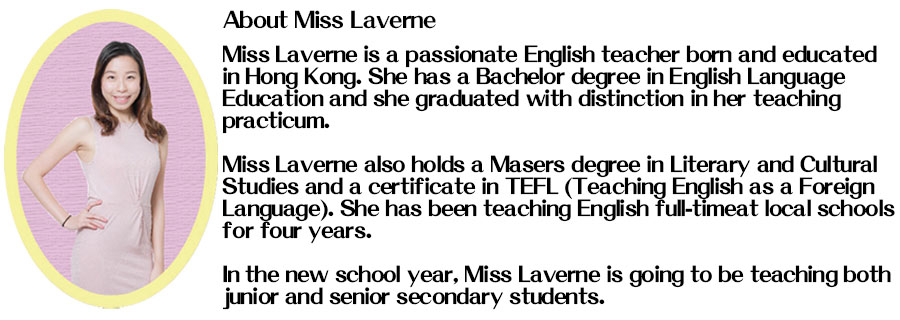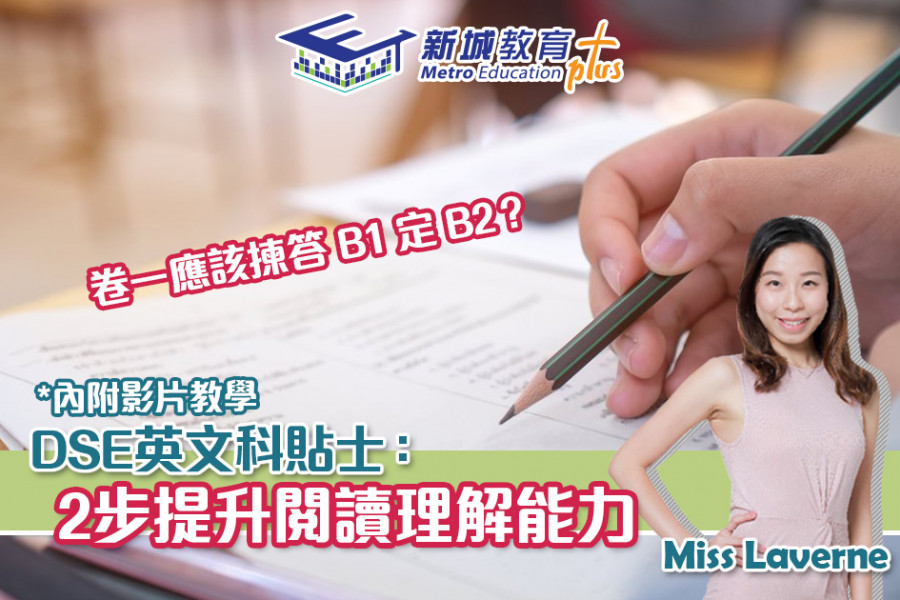Challenging Questions in 2019 DSE English Exam Paper 1 Part B2: Exploring Common Question Types and Answering Techniques
Part I Choosing the right paper: Part B1 (easier section) or B2 (more difficult section)?
Questions to ponder:
- What is the level that I wish to attain?
- How confident am I with my English reading and comprehension skills?
- What percentage of score do I usually get when I attempt Part B1 and Part B2 respectively?
- How well do I usually understand the themes and language in the text(s) in Part B2?
Choosing between Part B1 and B2 in Paper 1: Things to consider
| Part B1 (easier section) | Part B2 (more difficult section) | |
| Highest attainable level (可達到的最高水平) | Level 4 | Level 5** |
| Estimated % of scores required to attain a Level 3 | 80% | 50%-55% |
| Length of text(s) | about 900 words | about 1100-1300 words |
| Theme and language of the text(s) (題材與用語) | – More straightforward texts that explore more familiar themes – Involves mostly literal language (照字面的用語) | – More complex texts with less familiar themes – More advanced vocabulary items – Longer and denser sentences – Often involves both literal and figurative language (修辭) |
| Common question types (常見題型) | Usually consists more concrete factual items (具體資料題) that require relatively straightforward factual understanding of the text, e.g.:- Specific factual question (明確資料題) – Reference question (參照題) – Thematic question (辨識主題的題目) – Vocabulary question (詞彙題) – Sequencing question (排序題) | Often consists more extended response (延伸題) that involves more abstract concepts (抽象的概念) and require higher order skills (高階能力), e.g.:- Reference question (參照題) – Inference question (邏輯推論題) – Implicit information question (了解隱含意思的題目) – Views and attitude question (語氣/態度辨識題) – Figurative language question (修辭手法題) |
Part II Tackling Challenging Questions in 2019 Paper 1 Part B2
Now let’s look at some of the most challenging questions in 2019 Paper 1 Part B2. Less than 40% of candidates attempted these questions correctly. We’re going to analyse these questions in terms of their format, type, answering skills and techniques.
2019 Paper 1 Part B2 (Text 5)
Text Type: An excerpt from an autobiography (自傳節錄)
Author: Clive James
Theme: Rebellion (反叛)
Main idea: The Australian writer recounts how he attempted to get rid of his image as a ‘teacher’s pet’ by misbehaving at home and in class when he was a primary school student.
| Question item | % of correct attempts | Question format | Question type | Skill(s) tested | Answering techniques |
| Q.43 What does ‘the treatment’ (line 8) refer to? | 37% | Short response | Reference (參照題) | Ability to understand what a reference word (參照詞) or phrase refers to | Candidates should study the context (語境) surrounding the word. Read the sentence where the highlighted word appears, then read a few sentences that come before it. Sometimes, the answer is not explicitly (明確地) given. In this question, for example, ‘the treatment’ refers to ‘caning’ which is an unfamiliar concept for most candidates. Thus, candidates have to guess the answer by referring to the expressions ‘impart up to four strokes of the cane’ and ‘the six strokes’. |
| Q.44 According to paragraph 1, did Mr Slavin like Clive? Give a reason for your answer from the text. | 35% | Extended response | Specific factual (明確資料題) | Ability to understand information that is not explicitly stated | Candidates should support their answer with evidence from the text by relating Clive’s achievement of ‘coming out first in the term tests’ (line 2) to the behaviour of Mr Slavin who ‘couldn’t help smiling upon anyone who knew how to answer the questions’ (line 3-4). |
| Q.47 The writer talks about joking his way ‘out of trouble and into favour’ (line 14-15); but out of trouble and into favour with whom? | 27% | Short Response | Inference (邏輯推論題) | Ability to understand the core message of the text as a whole | To answer these inference questions successfully, candidates need to identify the main idea of the text. The writer’s core aim is to rebel and cause trouble in class since he wants to get rid of the ‘teacher’s pet’ label and to be accepted by his classmates.Candidates should bear in mind that the answer to some challenging questions may not be available in the text and that they will have to make logical guesses. |
| Q.48 According to paragraph 2, why was sitting at the back of the classroom a challenge for the writer? | 22% | Extended response | Inference (邏輯推論題) | ||
| Q.49 Why did the writer consider it undesirable to shout out ‘Sir! Sir! Sir!’ (line 20-21) and provide the correct answer? | 17% | Extended response | Inference (邏輯推論題) | ||
| Q.50 What did ‘fragments of pencil, pen holders or bits of chalk’ (line 23) represent in the writer’s imagination? | 5% | Short response | Figurative language (修辭手法題) | Ability to understand an extended metaphor (暗喻) | This question tests candidates’ understanding of figurative language. More able candidates would be able to make sense of the comparison the writer is trying to make with the help of descriptive phrases like ‘the network of railway tracks’ and ‘could be pushed with chuffing noises’. By exercising their imagination, more able students might be able to decode the writer’s metaphor in which ‘fragments of pencil, pen holders or bits of chalk’ represented trains. |
| Q.57 Was the writer’s second attempt at running away from home a success or a failure? Give a reason for your answer based on paragraph 6. | 29% | Extended response | Inference (邏輯推論題) | Ability to make a sensible judgement based on context cues (上下文提示) | This question requires candidates to judge whether the writer’s attempts were a success or a failure. Both answers could be correct, but candidates should refer to the relevant parts of the text as evidence. |
| Q.66 What does the last sentence in this text (lines 60-62) suggest the next paragraph would be about? | 22% | Extended response | Inference (邏輯推論題) | Ability to understand the core message and structural devices (結構手法) of the text | This question asks what the final sentence of the text suggests the next section will be about. Candidates should make use of their understanding of the writer’s core message to predict (推測) the likely development of the text. |
Reminders for candidates on Paper 1:
- Pay attention to your time management. Avoid spending too much time on Part A.
- Avoid excess copying from the original texts
- Pay attention to the form and spelling of words needed in gap-fill questions
- Pay attention to the grammar of questions, especially for one-word or short-answer questions (e.g. gap-fills, reference questions)
Tips for improving reading comprehension skills:
- Try to familiarise yourself with text sources used in past exams (e.g. South China Morning Post, The Guardian, The New York Times) to become more comfortable with the range and level of reading texts
- Expose yourself to a wide variety of reading topics and text types (e.g. article, letter to the editor, autobiography, book review, interview)
Source:
HKDSE English Language 2019 Paper 1 Marking Scheme and Comments on Candidates’ Performance, HKEAA
HKDSE Exam Study Guide, Pilot Publishing Company Ltd.
HKDSE English Language Exam Analysis Report 2019, Oxford University Press






